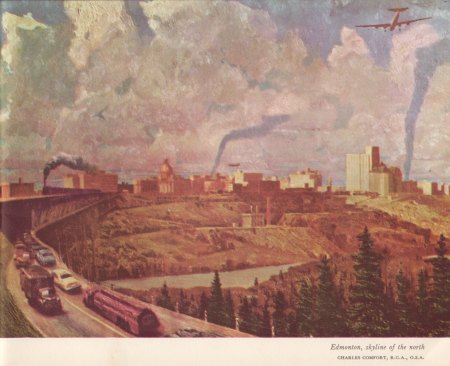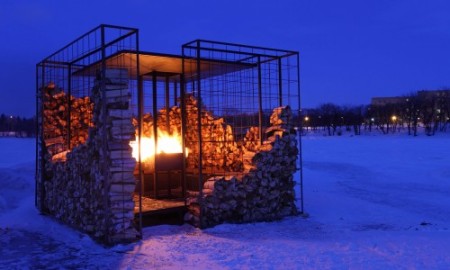
W. Kurelek, “Home on the Range” (1967)
~
On previous visits to the AGO in Toronto I’ve noticed William Kurelek’s paintings but for some reason his artwork stood out more notably on my most recent visit. Perhaps this was because my trip there was during a week of extreme cold just before year-end and many of Kurelek’s scenes on display at the AGO are prominently set during the winter.
Kurelek’s parents were Ukrainian immigrants to Canada and settled in the prairie regions, initially in Alberta and later, after his parents lost their farm during the Great Depression, in Manitoba. Winters can be harsh in much of Canada, but the vast unpopulated stretches of the country’s midsection make for a particularly stark cold season. While a viewer of his paintings can find other themes in his work (for example, his Catholicism or the influence of Hieronymous Bosch in Kurelek’s “Harvest of Our Mere Humanism Years” below), the experiences of his family and his youth on the Canadian prairie permeate many of his paintings, often in dichotomies. Thus, one can glean the tough slogging of farm work during winter (such as in “Child With Feed in Winter” below) as well as the whimsy and high-spiritedeness of childhood even in the midst of endless snowscapes or the as yet unknowable worries of the adult world (such as with “Reminiscences of Youth” and “After the Blizzard in Manitoba”, both also below).
Kurelek was a prolific painter and other aspects of life on the Canadian prairies can be found in his extensive body of work, but at this time of the year his “winter works” speak most clearly to me. The collaborative art site William Kurelek / The Messenger is a terrific resource for more background on this notable artist and his distinctively Canadian art.

W. Kurelek, “Reminiscences of Youth” (1968)
~

W. Kurelek, “Untitled (Child With Feed in Winter)” (1967)
~

W. Kurelek, “After the Blizzard in Manitoba” (1967)
~

W. Kurelek, “Sunset Cape Dorset Airstrip” (1968)
~

W. Kurelek, “Harvest of Our Mere Humanism Years” (1972)
~

W. Kurelek, “Wintertime North of Winnipeg” (1962)
Similar Posts on O’Canada:
♦ Magical Winterscapes By Group of Seven



















































































